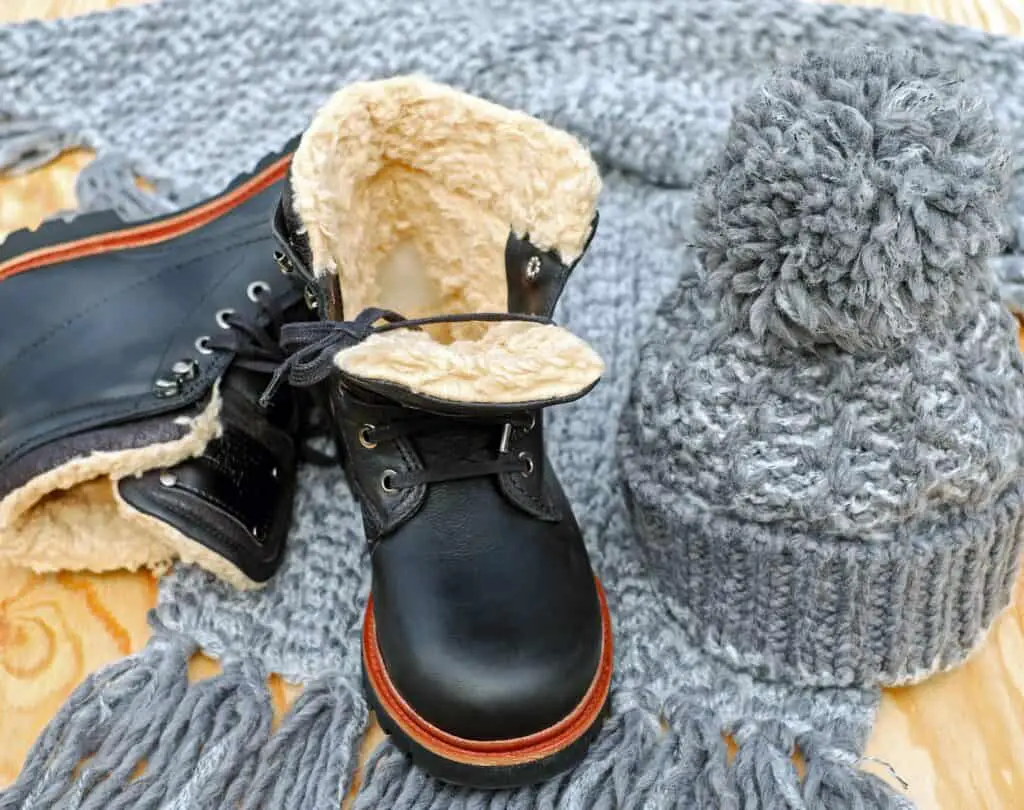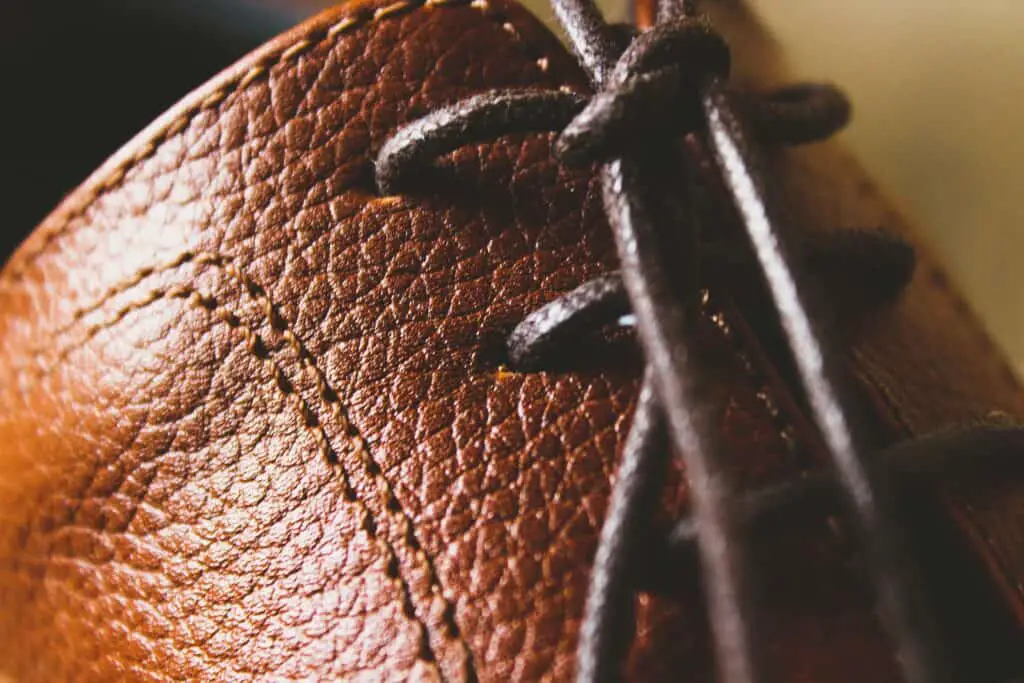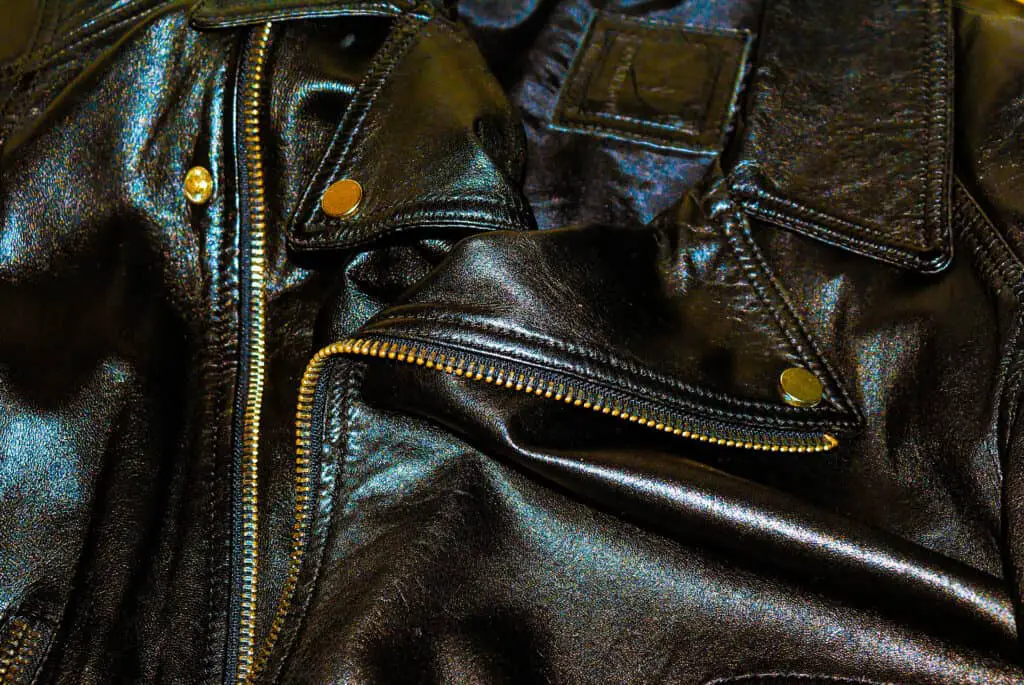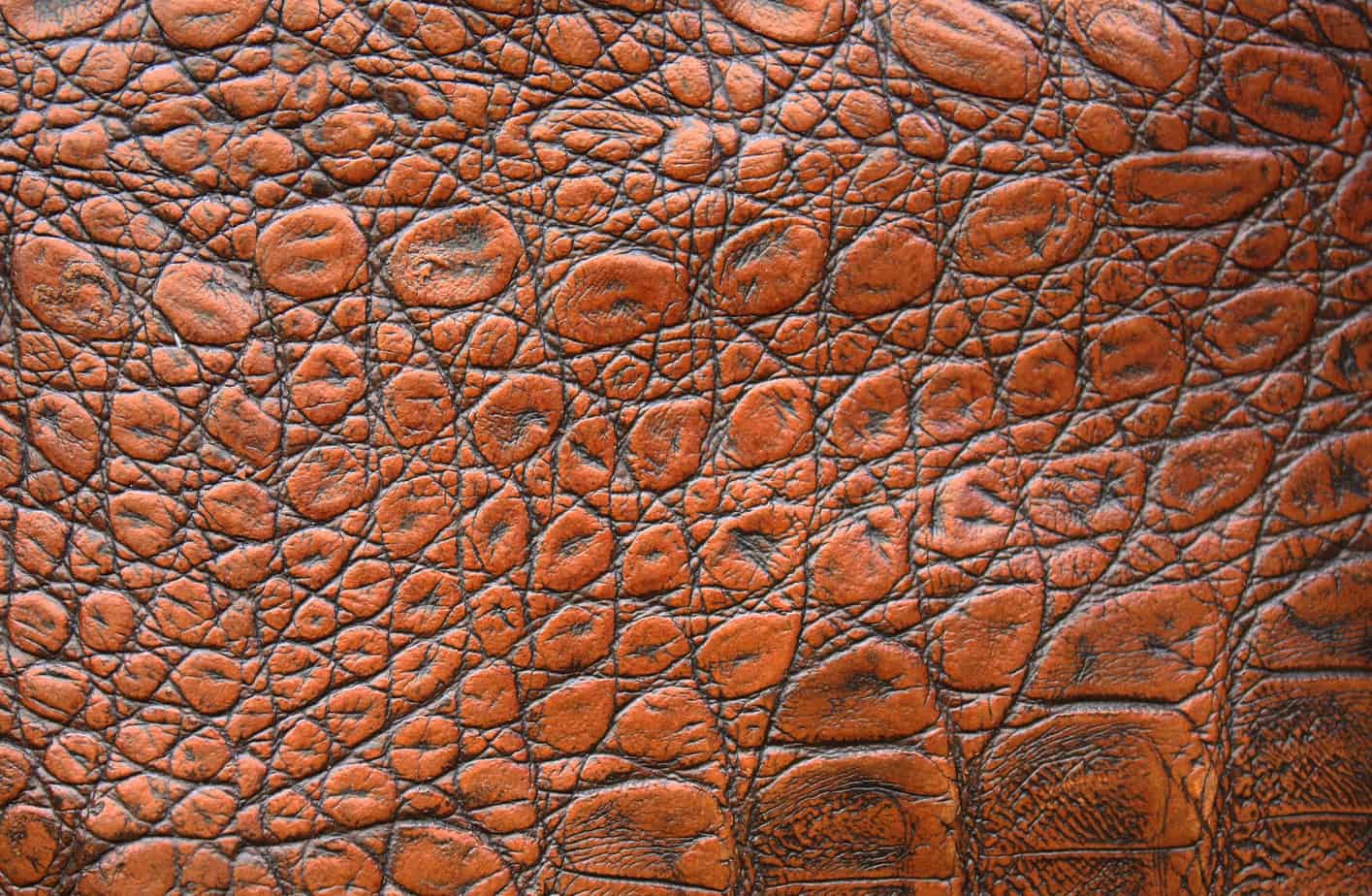We’ve seen it brave the burly conditions in films and games, a staple among road warriors and men on the go, but can leather truly be worn in the snow? Or is it all a facade?…
Despite common misconception, leather can, in fact, be worn in the snow, this can be achieved through methods like “waterproofing wax” or other methods of treatment that will increase leather durability or help prevent wear and tear damage over time.
There are certainly ways to combat snow on your leather products, however, there are some caveats to take into account, as some treatment measures may in fact harm, rather than help your leather jacket.
How to protect your leather jacket in snow
The age-old notion of your leather jacket lasting you a lifetime is fortunately true (luck you!). Leather is basically skin, after all, however, you should be mindful of the fact that your leather jacket won’t last long if you don’t know how to properly treat it.
But before you head out into the blizzard of whatever corner of the earth you’re in, know firstly the best method to protect your leather jacket against the elements of snow, is through “waterproofing.”
There are essentially two methods used to treat leather jackets when it comes to preparing them to witdthstand the freezing elements – one being preferable to the other (which I will explain in a sec.)
Lubricating sprays for your leather jacket
The first method is through the use of sprays, either a silicone polymer spray or an acrylic co polymer spray, this is considered the most effective and efficient method in “waterproofing” leather jackets.
- Silicone polymer
- Acrylic co polymer spray
These two sprays are apt as they are non-corrosive and are able to maintain their lubricating properties on most surfaces and temperatures, providing your jacket with some much-needed love in the form of lubrication to its surface, ensuring the leather material has less chance of cracking in dry below freezing temperatures.
Think of your leather jacket as a living, breathing vestibule, of which your body threads itself through. A second skin (literally), and like skin – it needs tending to once in a while, ensuring it retains its moisture & natural oils.
Atsko’s Silicone Water-Guard is my top pick as the only thing that outshines it’s reviews is it’s $7.67 price point as of currently. Here is a link to it on Amazon for you to check out if you’re interested.
If you wanna get a little bit fancy, here’s one by Collonil for $15, at over 900 reviews putting it at a 4 and half star rating (works on waterproofing numerous things too.) Here is the link to Amazon.
Wax/Grease based products for your leather jacket
The second (and arguably less favored) method, is waterproofing your jacket through the use of wax/grease-based products. While incredibly effective (even more so than lubricating sprays), their extreme potency comes at an extreme cost.
Wax and grease are so effective as they literally seal the leather in, to the point that it causes the leather to dry up even quicker.
Imagine someone sealing themselves in a room without ventilation, in an effort to protect themselves from even more unfavourable conditions right outside.
While technically protected – the conditions from within would not exactly be ideal for this fellow in the long run, and the same applies to your leather jacket.
Like I said your jacket is much like a living breathing being, and so you cant just slap on anything without giving it some thought.
You gotta let your leather jacket breathe, baby…
Add this, along with the alteration in makeup and look, that wax/grease based products will contribute to your leather jacket in color/shine & smell, and well…
You can see why lubing your “baby” with silicone polymer or acrylic copolymer sprays would be the wiser path to take.
Though wax products such as one by Duck’s Wax seems to be one of your best bet’s as a natural treatment product, at near 12 pounds at a 4 and a half star rating, you could do far worse. Reviews are top-notch too! Here is the Amazon link if you’re feeling dangerous enough.
Disclaimer: Be wary before applying any leather treatment products in general, as some DIY products may change the appearance or colour of your leather surface. For best practices, simply apply a small amount to an “unnoticeable” area of your jacket or shoe first, to see if there is a difference in colour or shade, and/or if it’s safe enough to continue using.
Hopefully, from this example alone, you can appreciate how intricate owning leather jackets can be, not just through general maintenance, but also in style and fit, which if you’re not sure about, here is an article on the perfect guide to the perfect leather jacket length.
How to protect your leather boots in the snow

Shoes and jackets while both being leather, differ slightly in terms of maintenance and care. The first obvious difference being, that your shoes are on your feet, which are closer to the ground (crazy i know.) Because of this, leather shoes generally need more maintenance and upkeep than leather jackets, as there’ll be more often prone to getting roughed up.\
And this includes weekly wipe downs, bi-yearly conditioning and polishing being as often as per needed – Basically, your shoes may need more attention if you want them to last longer, and this ties in on upkeep and wear & tear prevention in snowy conditions. The more you look after it, the longer it’ll last, in any condition.
Is snow bad for leather shoes? Yes… BUT, yet again, that doesn’t mean you can’t rock the style in winter weather, provided you make some preparations.
Just like waterproofing your leather jackets for the snow, you can help your boots weather, rather than wither the icy storms through the use of weatherproofing.
And just like jackets, these 2 differing treatment measures will help aid your shoe’s durability in the face of snow.
The two types protectants best suited for your shoes in snow are:
Wax/cream products (for leather shoes)
This is essentially a liquid wax or cream of sorts that will act as your shoe’s night in shining armour against the frosty weather.
This type of protectant will no doubt add shine (more so wax than cream) and a better overall health appeal, but you’ll need to apply it often as it wondrous effects are short-lived.
What I personally did (during my times in snowier altitudes) was I would always add a cream polish layer first, before adding any wax-based products onto my leather shoes. As overtime, I’ve found shoe wax tends to build up and dry out the leather.
Shoe cream generally is more gentle on the leather material than wax based products.
You can even entirely just use shoe cream instead. However your boi has always preferred a double layer of protection – and between you and me – I’ve always felt the shoe cream prior to adding the shoe wax, compensates and balances out the “drying” problem on my leather shoes, getting the best of both worlds…but that could be just me.
Saphir Medaille d’Or Mirror Gloss’s shoe wax polish is one of my utmost guilty pleasures. At $27 it’s not exactly cheap, and it’s thickness makes hard to keep a consistent polish throughout, though what I sneakily do is wax this baby on my toe cap and lower areas of the shoes (as suggested by an Amazon comment I saw) and its sheen and shine is like no other. Here is the amazon link if you’re interested.
What I will usually do is combine a wax with a shoe cream polish such as one by Saphir Pommadier, which combines cream & beeswax and gives my lower half a more subtle soft polish, here’s a link to their product on Kirbyallison.com which you can check out.
I wouldn’t recommend this approach if you don’t relish in the mere act of cleaning your footwear, however. If you prefer something cheaper and more straightforward, you’re better off getting a simple more affordable shoe wax-like Lincoln Stain Wax Shoe Polish here, or Cadillac Select’s shoe cream here.
Both under $10 and both links above will take you to Amazon.
If you’re willing to splurge on the absolute best, however, then you’d do best to check out COLOURLOCK Leather Care & Waterproofing Oil (link will take you to Amazon.com)
Highest rated leather care oil on the market that’ll be able to handle your leather jacket, wallet, coat, and clothing problem.
Beeswax products (for leather shoes)
Much like their wax/grease leather jacket cleaning counterparts, Beeswax is the bee’s knees in terms of protective strength. It is a powerhouse of a product, with its effectiveness in keeping your shoes safe to match.
However…the stuff won’t provide the best shine or look, and maaaaay alter the colour of the shoe over time. Though it’s rather quite effective as the substance layer tends to form over the shoe, rather than be absorbed by it. Which means this product acts as a literal shoe shield.
I personally would opt for shoe cream and/or shoe wax, but maybe you’re more of a Rogue stallion than me (impossible, but let’s pretend.)
My recommended product is Yellow Bee’s Natural Beeswax Leather Balm, it’s fairly cheap, and will last you a long while for the size whilst also having a 4 1/2 star rating based on over 360 reviews. Feel free to check out it on Amazon here.
Here is also another Amazon link to a beeswax product, top 5 stars though only based on 13 reviews, but at less than 5 pounds you can’t beat it.
If you’d rather save your buckaroos or can’t afford it, then no worries cuz your boi’s got you covered. Here is a link to a page on colorglo.com where they’ll show you how to make your own beeswax at home.
Style tip: What I may suggest is perhaps using beeswax on darker already “roughed up” looking shoes that are still stylish enough to wear outside.
This way they’ll last longer, and on the off chance their colour is altered, it won’t look too noticeable and/or will blend in nicely with your already battered Rambo shoe-looking aesthetic.
If you want the best of the best of Beeswax, then the Heavy Duty LP conditioner rated at 5 stars by Obenauf’s should get the job done. This one will darken your leather and has some other caveats, however, it’s strength level is unmatched. This link to Amazon will tell you more about it.
Always be wary of product selection when it comes to cleaning/maintaining your leather products, as not all are made for every type of leather. Look to the label on the product and jacket, firstly.
What if your leather shoes are already wet from the snow?

So you foroget to primp your shoes ahead of that blizzard eh? You’re doomed!
Just kidding.
Occasionally life bites you in the bum, and what can you do but dust that misery away and keep on trudging… Well, there is one thing you can do, at least where your leather shoes are concerned.
If your leather shoes are drenched and wet, you can still salvage it by wiping it down thoroughly and then stuffing it to the max with newspaper or tissues. This will help absorb the moisture and hopefully be able to dry it more effectively from the inside, over a prolonged period of time.
Avoid heat
Also please refrain from feeling the need to “cook” your footwear, either by means of a near fireplace or in direct sunlight…don’t do that. Too much heat will cause cracking, and direct sunlight will cause spotty discolouration, aiding and abetting in the fading of your leather’s once pristine colour. Let them dry naturally, at their own pace.
Water & Vinegar
Another way to help rid the stains on your already sullied footwear soiled from the snow is through a DIY combo of equal parts water and vinegar – To help with the riddance of snow salt stains on shoes.
Just mix and dab a soaked cloth full of the stuff onto your shoes, and the stains should come right off.
What if your leather jacket is already wet from the snow?

Again…life’s flipped you, bum-side down – and now you’re sweet leather jacket is over 9000 level’s of wetness. Fear not though, young padawan, as there’s still some semblance of a New Hope (okay I’ll stop.)
Salvage your wet leather jacket in 3 or 4 simple steps
To keep it brief there’s basically a series of steps to do when your leather jacket is already wet and or “ruined” by means of water/ and or snow.
- To start, wipe off and dry your shoes to the point where it’s merely damp (do not try and rough it by scribbling into the leather material, be very gentle and delicate.)
- Once merely damp, avoid any such things like blow dryers or fireplaces to dry your jacket (let the process happen naturally.) Let your leather jacket dry by hanging it on a wide padded hanger.
(Thin hangers can pull and put pressure on certain spots of the jacket, causing its shape to stretch & morph over time.)
- When dry, your best bet is to apply and massage a leather conditioner onto your leather jacket, leaving it dry for a few hours, or overnight if you can help it.
(The point here is to let the conditioner seep in and soak itself within the leather’s fibers, imbuing its oils and replenishing that of what the snow/water washed out of your jacket in the first place.)
Important note: Make sure you leave your leather jacket to dry for longer than you think necessary, as mildew is a possible fungal issue that occurs if any moisture still lingers.
Though you should be fine if you keep a lookout for it and catch it early. If any mildew is found, simply clean it off with a damn soapy cloth and re-apply conditioner to that area for a final touch up.
And voila!
“It’s the finest winin and dinin of all the wines and dines in town.”
-Baby Driver (2017)
Your leather item is not a puppy or a hot date, but it needs some attention once in a while. You don’t gotta get freaky with the damn thing…but just give it some TLC every now and then (through PG-13 means) and your treasured leather will be outliving you before you know it!
Stay Rogue.

